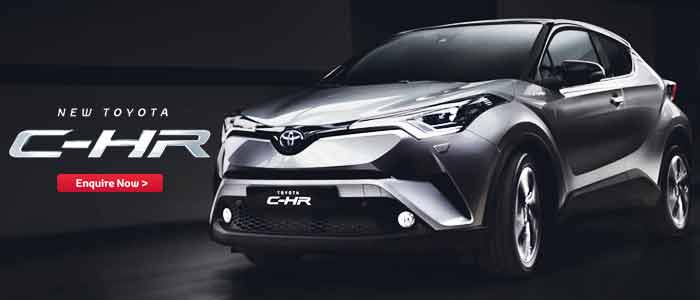Most of us would conclude that our windshield was a very useful piece of equipment. It keeps cold and heat; wind and rain, and untold numbers of bugs and other airborne road debris out of our faces.
The problem is that consumers have different and more limited expectations from the windshield than the automotive engineer. In other words, we worry about water leaks or ugly “dings” and cracks affecting our car’s value, while the engineer understands how such damage can affect the vehicle’s structural integrity and passenger safety.
The fact is that the modern automobile and truck, the windshield is part of the vehicle’s safety restraint system (SRS) that also includes airbags and seat belts. If any of these safety components are damaged or are inoperable for any reason, the effectiveness of the entire SRS could be compromised.
The SRS is designed to keep vehicle occupants within the relative safety of the passenger compartment during accidents, head-on collisions and roll-overs. The National Highway Traffic Safety Administration reports over 40,000 Americans are killed and over 5 million injured every year in highway crashes. Over 30 percent of the fatalities occur when vehicle occupants are either ejected from the vehicle or, injured during rollovers.
Windshields are intended to keep occupants inside the vehicle. The windshield also supports the roof thereby preserving the structural integrity of the passenger compartment and keeping it from collapsing and crushing driver and passengers.
Seen from this perspective of personal safety, consumers have a vested interest in making sure any damaged windshield they replace is replaced properly and safely. For these reasons, every vehicle owner should be aware of the five most important safety functions performed by their windshield.
![]() The most obvious windshield function is, of course, visibility. Unlike drivers of old, we do not wear goggles that keep bugs out of our eyes or highway debris from hitting our face. Even so, the modern windshield can become pitted and scratched from minute dirt and sand particles. Pebbles and stones can fracture the glass causing dings that, if left unattended, can affect vision.
The most obvious windshield function is, of course, visibility. Unlike drivers of old, we do not wear goggles that keep bugs out of our eyes or highway debris from hitting our face. Even so, the modern windshield can become pitted and scratched from minute dirt and sand particles. Pebbles and stones can fracture the glass causing dings that, if left unattended, can affect vision.
![]() The second windshield function is not as obvious. In many cars and trucks, the windshield supports the passenger side airbag during deployment. If a windshield is replaced improperly, the windshield could become detached from the vehicle in an accident. If this happens the passenger side airbag will not deploy properly.
The second windshield function is not as obvious. In many cars and trucks, the windshield supports the passenger side airbag during deployment. If a windshield is replaced improperly, the windshield could become detached from the vehicle in an accident. If this happens the passenger side airbag will not deploy properly.
![]() Thirdly, windshields cushion the blow if a vehicle occupant is thrown forward in a crash. Windshields are made of two layers of glass sandwiched around a layer of polyvinyl material. The glass may break but the polyvinyl layer is flexible and cushions the impact. This feature explains why windshields are made of glass, not plastic. Plastic is rigid and unforgiving to a person’s head and neck.
Thirdly, windshields cushion the blow if a vehicle occupant is thrown forward in a crash. Windshields are made of two layers of glass sandwiched around a layer of polyvinyl material. The glass may break but the polyvinyl layer is flexible and cushions the impact. This feature explains why windshields are made of glass, not plastic. Plastic is rigid and unforgiving to a person’s head and neck.
![]() The fourth windshield safety attribute is closely related to the third. When the windshield cushions the occupant’s impact, it also keeps the occupants within the relative safety of the passenger compartment. If the windshield becomes separated from the vehicle, the occupants could be ejected through the windshield opening and onto the roadway. Outside the vehicle, the danger of being crushed by the vehicle is greatly enhanced.
The fourth windshield safety attribute is closely related to the third. When the windshield cushions the occupant’s impact, it also keeps the occupants within the relative safety of the passenger compartment. If the windshield becomes separated from the vehicle, the occupants could be ejected through the windshield opening and onto the roadway. Outside the vehicle, the danger of being crushed by the vehicle is greatly enhanced.
![]() Finally, there is the integrity of the passenger compartment. Years ago, most vehicles had steel A-pillars to support the roof. Today, it is the windshield that provides much of the support that prevents the roof’s collapse during vehicle roll-overs.
Finally, there is the integrity of the passenger compartment. Years ago, most vehicles had steel A-pillars to support the roof. Today, it is the windshield that provides much of the support that prevents the roof’s collapse during vehicle roll-overs.
There are a few common sense tips people can follow to ensure their windshield performs as intended. The ideal scenario calls for saving the original windshield installed by the factory. The conditions inside the factory for installing a windshield are perfect, so the confidence level in the factory seal between windshield and vehicle is highest. If the original windshield is damaged, there are two choices. Either repair the original windshield or replace it. The advantage of repair is the factory’s safety seal is not broken. The windshield is not removed from the car. That saves both the very expensive windshield and the safety seal.
Many people are unsure if their windshield can or cannot be repaired, so it is extremely important to consult a competent auto glass service provider for advice. If you are not sure, it is always a good idea to ask local service providers if their technicians are certified by the National Glass Association.
If the damage is beyond repair, the windshield replacement is the only other alternative. If a replacement is indicated, ask if the auto glass shop endorses the Auto Glass Replacement Safety Standard (AGRSS) and trains their technicians to that standard.



























